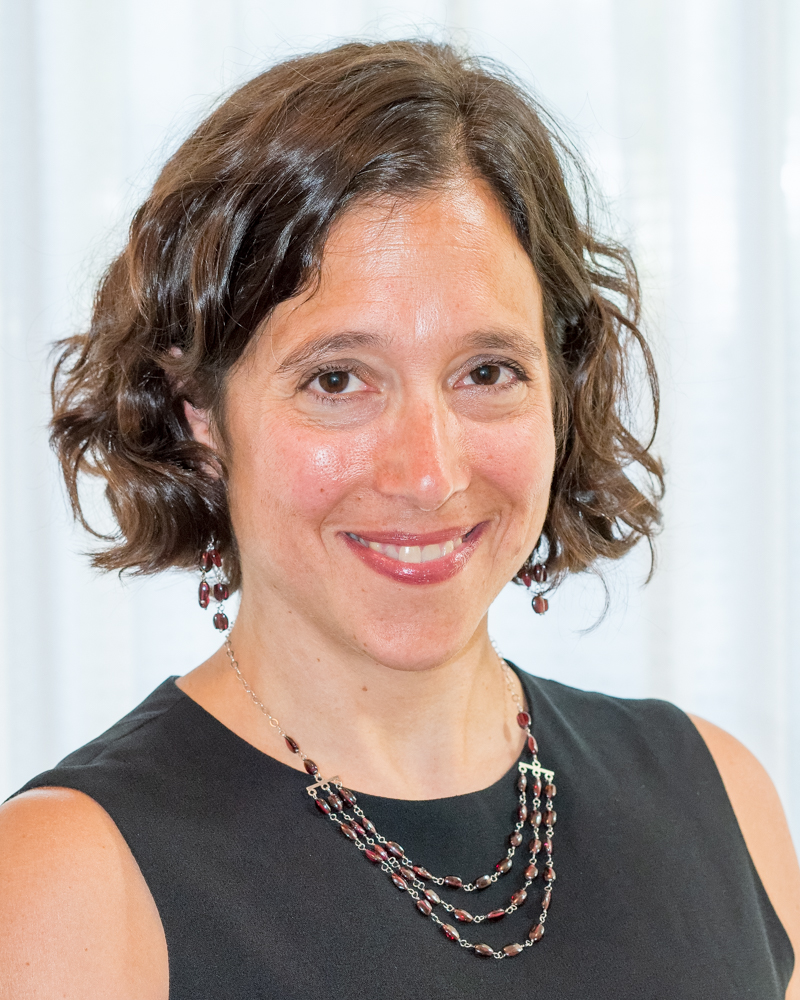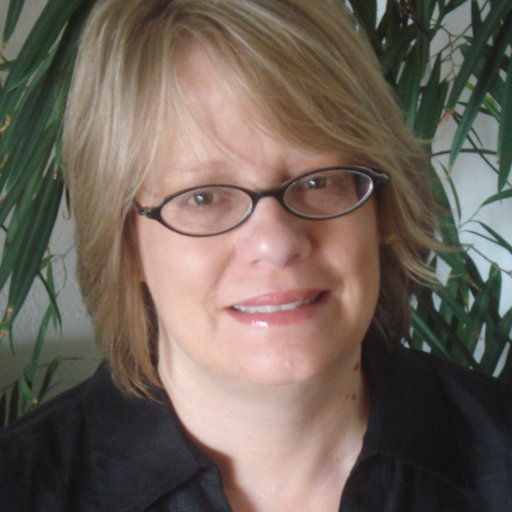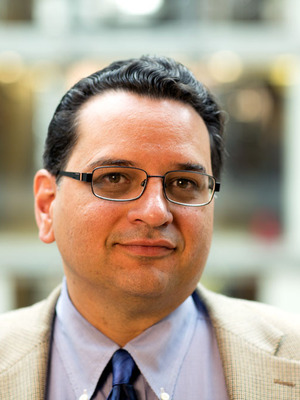Language as a Social Determinant of Health: An Applied Linguistics Perspective on Health Equity
Authors: Rachel Showstack, Maricel G. Santos, Emily Feuerherm, Holly Jacobson, & Glenn Martínez
Introduction
The idea that good health starts with good individual choices is a widely accepted assumption.[1] While this emphasis on individual choices – such as the choice to eat well, exercise, not smoke, get regular check-ups, or follow screening guidelines -- may not seem controversial, it fails to account for the broader social, economic and physical environmental conditions that may influence our health. In other words, where we are born, live, work, go to school, or raise our families can make a significant difference in our health outcomes, quality of life, access to health care resources, risk for disease, and even our sense of safety. In U.S. public health[2] and in social and behavioral sciences more generally, these social and physical conditions are referred to as “social determinants of health” (Irwin & Scali, 2007). According to research based on the U.S. Census, individuals and communities living even a few miles from one another can experience vastly different health outcomes, with people of color disproportionately affected compared to White residents (Chetty, Friedman, Hendren, Jones, & Porter, 2018). Many of the populations we focus on in our research and practice as applied linguists – immigrants and refugees, indigenous peoples, racial and ethnic minority groups, among others – experience serious health disparities, or unfair differences in health outcomes, that can be traced to a history of social and linguistic segregation, discrimination against minority groups, and weak investment in the neighborhoods where they live. As demonstrated by research in linguistic anthropology and public health, social conditions that are associated with negative health outcomes are often accompanied by other co-existing conditions and multiple illnesses; patients who encounter language difficulties in health care contexts may also experience socio-economic disparities and participate in diverse cultural practices related to health and illness to which their health care providers may not know how to repsond (Briggs & Mantini-Briggs, 2016; Martínez, 2018; Singer et al., 2006). In response to these conditions that can lead to less than optimal health outcomes, the U.S. public health system -- at local and national levels -- has prioritized the advancement of health equity, which means that “everyone has the opportunity to attain their highest level of health” (American Public Health Association).
How can our expertise in applied linguistics and language education make a difference in efforts to reduce health disparities for racial, ethnic, and linguistic minority communities and ultimately work towards health equity for the populations we teach and study? Why is it critical that our profession advocate for renewed attention to language in health care, not merely as a demographic marker, but arguably as one of the most significant (and yet underexplored) social determinants of health in underserved linguistic minority communities? In this Applied Linguistics Brief, we tackle these essential questions about the role of applied linguistics in today’s health care system. Specifically, we focus on (1) the persistent health disparities associated with the “Limited English Proficient” marker; (2) social aspects of health care discourse, including translation and interpretation interactions; and (3) the need for a health care workforce that is better prepared and, indeed, more reflective of the linguistic and racial/ethnic diversity in today’s patient populations. By drawing on literature in applied linguistics, linguistic anthropology, language education, and public health, we underscore the need for interdisciplinary dialogue and problem-solving across all three fields.
We see this brief as one way that AAAL members and colleagues can respond to this call of APHA Executive Director Georges Benjamin: “Health equity is a goal we can achieve, and it’s within our power to do so. We have the tools and the knowledge to make health equity happen, but it’s up to all of us to use them.” We hope this brief stimulates thinking about how we can use our tools and knowledge as applied linguists and language educators to improve public awareness and inform policy debates about the role of language and the linguistic demands of our health care system.
I. How do applied linguists understand and research the relationship between linguistic marginalization and health disparities?
Linguistic marginalization, (also referred to as linguistic minoritization), is commonly recognized as a major barrier to access to health services and health information (cf. Nielsen-Bohlman, Panzer, & Kindig, 2004), yet its contribution to health disparities remains largely under-theorized and under-researched (Sentell & Braun, 2012). In clinical practice, the “LEP” (so-called “Limited English Proficiency”) marker is frequently tied to global assumptions about proficiency and deficit views of language that position minority language speakers as deficient. For example, during patient intake processes, the default measure of English proficiency is spoken English proficiency, and literacy level is regarded as literacy in English (Santos, Jacobson, & Manneh, 2017). Applied linguists are well-poised to clarify important sociolinguistic realities in health care communication, specifically helping to illuminate the relationship between linguistic marginalization and health outcomes for diverse linguistic, racial, and ethnic groups. We are also hopeful that the multilingual turn unfolding in the field of applied linguistics will invite critical reflection about a monolingual bias in public health, and ultimately, open up new lines of thinking about the relationship between a patient’s evolving linguistic repertoire (not just proficiency in spoken English) and health care needs over the course of one’s life time (Santos, Jacobson, & Manneh, 2017).
Interdisciplinary research collaborations between applied linguists and public health researchers demonstrate the ways that a patient’s language interacts with her health and health care, as well as other aspects of her life and background, to lead to particular health outcomes. Wide-ranging studies on language concordance, or the provider’s use of the patient’s preferred language, have uncovered that a shared language shapes health care encounters on multiple levels It has been shown that language concordant providers ask more questions and are less concerned about medical malpractice complaints than providers who work through an interpreter. Patients with language concordant providers display greater trust, show more agreement and are more likely to follow doctor recommendations, although research has shown that this depends on clinician proficiency (cf. Lion et al., 2012, Diamond et al. 2012, and ). Patients with type 2 diabetes, moreover, have been found to have better health outcomes when their provider speaks their language (Fernandez et al., 2011).
Martínez (forthcoming) argues for a ‘syndemic sensibility’ when considering the relationship between language and healthcare. This sensibility accounts for the complex interactions between proficiency in the dominant language and other social factors embedded within multiple health conditions; he points out that language researchers, who understand communication as a process of intersubjectivity, or shared experience in interaction that leads to understanding, are needed to better understand this relationship. This research demonstrates that case studies on individuals’ experiences with the healthcare system can lead to a more profound understanding of the relationship among a patient’s language proficiency, disease, health disparities and health outcomes.
Applied linguists also play an important role in extending innovations in health science to culturally and linguistically diverse communities, and involving those communities in public health research. ‘Translational research’ seeks to identify and implement the best strategies for the adoption of evidence-based interventions in community settings (Madon, Hofman, Kupfer, & Glass, 2007; McNulty et al., 2019; Rubio et al., 2010). To determine how implementation practices function in specific communities, there is a need to include community voices in the conversation. Patient-Centered Outcomes Research is a translational approach to public health research that involves patients, patients’ family members, healthcare providers, and other stakeholders in determining which aspects of healthcare should be investigated and how to design a research project, and in conducting the research and analyzing the findings (e.g. Martínez, 2018). This “emic” (or insider) perspective on language access has the potential of opening up new areas of inquiry that intersect with applied linguistic interests in areas such as translation and interpretation, second language studies, interactional sociolinguistics, conversation analysis, and language ideologies. Patient-centered approaches will likely make a significant contribution to determining future directions for research on language barriers and health equity, and funding for these types of research projects has increased at the national level. Applied linguists can draw on their expertise to engage the voices of linguistic minority patients and their communities in translational research and implementation science (cf. Showstack, 2019).
II. How do applied linguists investigate healthcare interactions with language minority patients?
In this section, we argue that only when assumptions about language use and proficiency standards in healthcare are critically examined can the promise of language assistance be fully realized. The effectiveness of any language-assistance policy arguably depends on an expanded, strengths-based appraisal of the rich linguistic repertoire that linguistic minority patients bring to healthcare interactions (Santos, Jacobson, & Manneh, 2017).
One aspect of communication in healthcare contexts that has been examined is the role of healthcare interpreters in the doctor-patient-interpreter triad (Angelelli, 2004; Dysart-Gale, 2005, 2007; Hsieh, 2006, 2009; Showstack, forthcoming); ethical guidelines stipulate that interpreters serve as patient advocates, clarifiers, and cultural brokers, but understandings of these roles can vary, and certain limitations to the interpreter’s role may prevent interpreters from serving language minority patients in particular ways. Federal, state, and institutional language policies, and the implementation of such policies also play an important role in access to quality healthcare for linguistic minority status patients.
The use of ad hoc interpreters, such as a patient’s family member or the administrative staff at a hospital, is a practice that remains common in many facilities (e.g. see Benda et al., 2019). It has been associated with clinically significant errors in communication and reduced health outcomes for patients with limited proficiency in the dominant language (Flores, Abreu, Barone, Bachur, & Lin, 2012). Applied linguists and the field of applied linguistics can help to illuminate and address these issues of health care and inequity by engaging in research on language policy in healthcare contexts, such as requirements for interpreter competency, policies for reimbursement of healthcare facilities for the use of interpreters, and the implementation of such policies (e.g. Showstack, Guzman, Chesser, & Woods, 2019; Youdelman, 2017). In addition, it is important to examine the nature of non-professional interpreting practices and the experiences and perceptions of non-professional interpreters, especially child language brokers, children who interpret for family members and often provide mediation between the health care system, the broader community, and their families (Green, Free, Bhavani, & Newman, 2005; Katz, 2014; Reynolds & Orellana, 2015).
In addition to the ‘macro’ institutional language policies, such as those that shape decisions about providing interpreters in particular institutions, applied linguists must also examine the interactional patterns of language use in encounters between healthcare providers, interpreters, and patients. Approaches such as Conversation Analysis, Discourse Analysis, and Critical Discourse Analysis can all be useful to examine the processes of positioning and negotiation that occur in these interactions (Jacobson, 2009; Raymond, 2014). Work that addresses diverse practices of communication about health and illness within different types of healthcare settings is needed to understand the types of communicative disjunctures that can occur (Guzman, 2014; Harvey, 2008). Analyses of intercultural pragmatics, or communicative practices in contexts in which people from two or more cultures interact with each other, in a range of healthcare settings can provide information on the kinds of cultural misunderstandings and negotiations of meaning that may occur in contexts of cultural contact (Cohen, 2012) and can also provide valuable material for educational programs for interpreters and providers that address intercultural communication. In addition, rigorous interdisciplinary research in translation and interpreting testing and assessment is needed to assure quality of services provided to patients and healthcare providers (Angelelli & Jacobson, 2009).
III. How can applied linguists and language educators support health equity through education?
In addition to the opportunities to engage in research that addresses the relationship between language barriers and health equity, there is a great deal of work to be done by providing high-quality education in the health professions. There is a need for training to produce more language-concordant providers, training for providers on working with interpreters, and improved training that goes beyond the notion of ‘cultural competence’ for socially and culturally diverse patients (Fernández & Pérez-Stable, 2015; Karliner, Pérez-Stable, & Gildengorin, 2004; Koehn & Swick, 2006). As applied linguists and language educators, we can develop training programs to create a workforce of competent interpreters and language concordant providers, and we can also develop interprofessional programs that allow providers and language professionals to learn together (Showstack, Guzman, Chesser, & Keene Woods, 2019). For example, at Wichita State University in Kansas, Spanish students and nursing students participate together in simulations of patient visits with high-fidelity mannequins and then debrief together on what went well and what they could have done better (Showstack, Martínez, Keene Woods, & Nicks, 2019).
Language educators should also be conscious of the investment of particular groups of students in addressing language barriers in healthcare. For example, Spanish heritage speakers who have served as language brokers for their parents may desire to continue academic study of their heritage language in order to be able to serve Latinos in healthcare contexts, and it is important to provide training opportunities for groups with this kind of personal investment (Showstack, 2019; Showstack & Guzman, forthcoming). It is important to provide training opportunities for groups with this kind of personal investment, such as the program for high school students in Columbus, Ohio that trains Spanish heritage speakers to become medical interpreters, and the healthcare service-learning opportunities offered through the Spanish for the Professions program at Wichita State University in Kansas and in similar programs at other institutions. Similarly, educators can provide institutional support to legitimate the role of multilingual community health workers (‘promotores de salud’); in many regions, these educators serve primarily as volunteers, and we argue that their work should receive government funding.
IV. How can applied linguists create interdisciplinary, inter-professional, and international coalitions?
Language and health is a subdiscipline of the fields of applied linguistics, public health, nursing, linguistic anthropology, and communication studies, among others. Applied linguists, anthropologists, public health researchers, social and behavioral researchers across disciplines; language educators, healthcare providers, language minority patients, and interpreters interested in developing programs of research and education in this area should develop cross-disciplinary ties to optimize their potential to impact individuals, communities, and health outcomes. This can include
networking across disciplines to research the impact of language minority status on health education and health care
- forging cross-disciplinary partnerships with public health partners
- applying for local and national funding from health research institutes
- inviting partners from health disciplines to co-present at AAAL
- co-presenting our applied linguistics work at public health conferences
- co-authoring papers across disciplines
- building interdisciplinary curricula that explore intersections of language and health
- offering inter-professional educational opportunities for students from multiple fields (e.g. interpreting and nursing)
Finally, although much of the work presented here is centered in the U.S. context, language barriers are a significant component of health equity worldwide, and sociolinguistic phenomena may affect health outcomes in different ways in different geographical and sociopolitical contexts. Some interdisciplinary, translational, place-based research has already begun, and yet this call to action is ambitious and visionary: it extends across a broad range of disciplines, professions and geographic and sociopolitical contexts and requires a dedication to cooperation and collaboration. With this brief, we charge the reader to consider how language and health overlap in your proverbial backyard, and what capacities you have for raising awareness of language barriers. In other words, how can you advocate for health equity through your own research, teaching, writing, clinical work, translation/interpretation work, professional interactions, or other work?
References
Angelelli, C. V. (2004). Revisiting the interpreter’s role: A study of conference, court, and medical interpreters in Canada, Mexico,
and the United States (Vol. 55). Amsterdam: John Benjamins.
Angelelli, C. V., & Jacobson, H. E. (2009). Testing and Assessment in Translation and Interpreting Studies. In C. V. Angelelli &
H. E. Jacobson (Eds.), Testing and assessment in translation and interpreting studies: A call for dialogue between research and
practice (Vol. XIV, pp. 1-10). Amsterdam: John Benjamins.
Benda N, Fairbanks R, Higginbotham D, Lin L, Bisantz A. (2019). An Observational Study to Understand Interpreter Service
Use in Emergency Medicine – Why the Key to Improvement May Lie Outside of the Initial Provider Assessment. Emergency
Medicine Journal, 36(10), 582-588.
Briggs, C. L., & Mantini-Briggs, C. (2016). Tell me why my children died: Rabies, indigenous knowledge, and communicative justice.
Durham: Duke University Press.
Chetty, R., Friedman, J. N., Hendren, N., Jones, M. R., & Porter, S. R. (2018). The Opportunity Atlas: Mapping the Childhood Roots
of Social Mobility (25147). Retrieved from https://www.census.gov/ces/dataproducts/opportunityatlas.html
Cohen, A. D. (2012). Research methods for describing variation in intercultural pragmatics for cultures in contact and
conflict. In J. C. Félix-Brasdefer & D. A. Koike (Eds.), Pragmatic Variation in First and Second Language Contexts (Vol. 31, pp.
IMPACT: Studies in Language and Society). Amsterdam: John Benjamins.
Diamond, L. C., Tuot, D. S., Karliner, L. S. (2012). The use of Spanish language skills by physicians and nurses: Policy
implications for teaching and testing. Journal of General Internal Medicine. 2012 Jan; 27 (1), 117-23.
Dysart-Gale, D. (2005). Communication Models, Professionalization, and the Work of Medical Interpreters. Health
Communication, 17(1), 91-103.
Dysart-Gale, D. (2007). Clinicians and medical interpreters negotiating culturally appropriate care for patients with limited
English ability. Family and Community Health, 30(3), 237-246.
Fernández, A., & Pérez-Stable, E. J. (2015). ¿Doctor, habla español? Increasing the Supply and Quality of Language-
Concordant Physicians for Spanish-Speaking Patients. Journal of General Internal Medicine, 30(10), 1394-1396.
Fernandez, A., Schillinger, Warton, M. E., Adler, N., Moffet, H, Schenker, Y., Salgado, M. V., Ahmed, A., Karter, A. K. (2011)
Language Barriers, Physician-Patient Language Concordance, and Glycemic Control Among Insured Latinos with
Diabetes: The Diabetes Study of Northern California (DISTANCE). Journal of General Internal Medicine, 26 (2), 170-176.
Flores, G., Abreu, M., Barone, C. P., Bachur, R., & Lin, H. (2012). Errors of medical interpretation and their potential clinical
consequences: A comparison of professional versus ad hoc versus no interpreters. Annals of Emergency Medicine, 60(5),
545-553.
Green, J., Free, C., Bhavani, V., & Newman, T. (2005). Translators and mediators: Bilingual young people’s accounts of their
interpreting work in health care. Social Science & Medicine, 2005, 2097-2110.
Guzman, J. (2014). The Epistemics of Symptom Experience and Symptom Accounts in Mapuche Healing and Pediatric
Primary Care in Southern Chile. Journal of Linguistic Anthropology, 24(3).
Harvey, T. S. (2008). Where There is No Patient: An Anthropological Treatment of a Biomedical Category. Culture, Medicine,
and Psychiatry(32).
Hsieh, E. (2006). Conflicts in how interpreters manage their roles in provider-patient interactions. Social Science and Medicine,
63, 721-730.
Hsieh, E. (2009). Understanding Medical Interpreters: Reconceptualizing Bilingual Health Communication. Health
Communication, 20(2), 177-186.
Irwin, A., & Scali, E. (2007). Action on the social determinants of health: A historical perspective. Global Public Health, 2(3).
doi:10.1080/17441690601106304
Jacobson, H. (2009). Moving beyond words in assessing mediated interaction: Measuring interactional competence in
healthcare settings. In C. V. Angelelli & H. E. Jacobson (Eds.), Testing and Assessment in Translation and Interpreting Studies
(Vol. XIV, pp. 49-70). Amsterdam: John Benjamins.
Karliner, L. S., Pérez-Stable, E. J., & Gildengorin, G. (2004). The Language Divide: The Importance of Training in the Use of
Interpreters for Outpatient Practice. Journal of General Internal Medicine, 19, 175-183.
Katz, V. (2014). Children as brokers of their immigrant families’ health-care connections. Social Problems, 61(2), 194-215.
Koehn, P. H., & Swick, H. M. (2006). Medical Education for a Changing World: Moving Beyond Cultural Competence into
Transnational Competence. Academic Medicine, 81(6), 548-556.
Lion et al. (2012). Impact of language proficiency testing on provider use of Spanish in medical care. Pediatrics. 130 (1), 80-7.
Madon, T., Hofman, K. J., Kupfer, L., & Glass, R. I. (2007). Implementation Science. Science, 318, 1728-1729.
Martínez, G. (2018). Engaging Language Professionals for Patient-Centered Outcomes Research for Latino Communities.
Ohio and Kansas: Patient-Centered Outcomes Research Institute.
Martínez, G. (forthcoming). Spanish in Health Care: Policy, Practice and Pedagogy in Latino Health. Routledge.
McNulty, M., Smith, J. D., Villamar, J., Burnett-Zeigler, I., Vermeer, W., Benbow, N., Brown, H. (2019). Implementation research
methodologies for achieving scientific equity and health equity. Ethnicity and Disease, 29, 83-92.
Nielsen-Bohlman, L., Panzer, A.M., Kindig, D.A. (Eds). (2004). Health literacy: A Prescription to End Confusion. Washington, DC:
National Academies Press.
Raymond, C. W. (2014). Conveying information in the interpreter-mediated medical visit: The case of epistemic brokering.
Patient Education and Counseling, 97, 38-46.
Reynolds, J. F., & Orellana, M. F. (2015). Translanguaging within enactments of auotidian interpreter-mediated interactions.
Journal of Linguistic Anthropology, 24(3).
Rubio, D. M., Schoenbaum, E. E., Lee, L. S., Schteingart, D. E., Marantz, P. R., Anderson, K. E., Esposito, K. (2010). Defining
Translational Research: Implications for Training.
Santos, M. G., Jacobson, H. E., & Manneh, S. (2017). Limited English Proficiency as a Consideration When Designing Health
and Risk Messages Oxford Research Encyclopedia of Communication.
Showstack, R. (forthcoming). Making sense of the interpreter role in a healthcare service-learning program. Applied
Linguistics.
Showstack, R. (2019). Patients don’t have language barriers; the health care system does. Emergency Medicine Journal, 36(10),
580-581.
Showstack, R., & Guzman, K. (forthcoming). Heritage speakers, monolingual policies, and Spanish language maintenance in
Kansas. In S. Alvord & G. Thompson (Eds.), Spanish in the United States: Attitudes and Variation. Routledge Studies in
Hispanic and Lusophone Linguistics. New York, Routledge.
Showstack, R., Guzman, K., Chesser, A. K., & Keene Woods, N. (2019). Improving Latino Health Equity Through Spanish
Language Interpreter Advocacy in Kansas. Hispanic Healthcare International. 17(1), 18-22.
Showstack, R., Martínez, G., Keene Woods, N., & Nicks, S. (2019). Interprofessional Education for Students of
Translation/Interpretation and the Health Professions. Paper presented at the American Association for Teachers of Spanish
and Portuguese Annual Conference, San Diego, CA.
Singer, M. C., Erickson, P. I., Badiane, L., Diaz, R., Ortiz, D., Abraham, T., & Nicolaysen, A. M. (2006). Syndemics, sex and the
city: Understanding sexually transmitted diseases in social and cultural context. Social Science & Medicine, 63, 2010-2021.
Youdelman, M. (2017). Medicaid and CHIP reimbursement models for language services. National Health Law Program.
About the Authors:
 Rachel Showstack, PhD (corresponding author), is Associate Professor of Spanish at Wichita State University. Her work on Spanish heritage language learning, Spanish in the U.S., and language and healthcare has appeared in various scholarly journals and edited collections. She coordinates the certificate program in Spanish for the Professions at Wichita State and is currently conducting research on access to quality healthcare for Spanish speakers in the United States. Rachel can be reached at rachel.showstack@wichita.edu.
Rachel Showstack, PhD (corresponding author), is Associate Professor of Spanish at Wichita State University. Her work on Spanish heritage language learning, Spanish in the U.S., and language and healthcare has appeared in various scholarly journals and edited collections. She coordinates the certificate program in Spanish for the Professions at Wichita State and is currently conducting research on access to quality healthcare for Spanish speakers in the United States. Rachel can be reached at rachel.showstack@wichita.edu.
 Maricel G. Santos, EdD, is Professor of English at San Francisco State University, where she teaches in the MA TESOL and EdD in Educational Leadership Programs. She was a 2008-2013 faculty fellow with the Research Infrastructure in Minority Institutions (RIMI) program, National Center for Minority Health and Health Disparities, National Institutes of Health. Her research explores adult learner participation as a health-protective factor in transnational communities. Maricel can be reached at mgsantos@sfsu.edu.
Maricel G. Santos, EdD, is Professor of English at San Francisco State University, where she teaches in the MA TESOL and EdD in Educational Leadership Programs. She was a 2008-2013 faculty fellow with the Research Infrastructure in Minority Institutions (RIMI) program, National Center for Minority Health and Health Disparities, National Institutes of Health. Her research explores adult learner participation as a health-protective factor in transnational communities. Maricel can be reached at mgsantos@sfsu.edu.
 Emily Feuerherm, PhD, is Associate Professor of Linguistics at the University of Michigan – Flint, where she teaches in the English Department and directs both the Bridge Program and the TESOL Certificate Program. Her research uses community-based participatory action research to critically explore language access and program development, especially for speakers of minoritized languages in the U.S. Emily can be reached at feuerher@umich.edu.
Emily Feuerherm, PhD, is Associate Professor of Linguistics at the University of Michigan – Flint, where she teaches in the English Department and directs both the Bridge Program and the TESOL Certificate Program. Her research uses community-based participatory action research to critically explore language access and program development, especially for speakers of minoritized languages in the U.S. Emily can be reached at feuerher@umich.edu.
 Holly E. Jacobson, PhD, is Associate Professor of Linguistics at the University of New Mexico. She conducted research in health disparities as Senior Research Fellow at the National Institutes of Health, and has received subsequent extramural funding from NIH. Her cross-disciplinary research focuses foremost on language and health. She studies the complex interaction of language variables and their impact on healthcare access, health outcomes, and health disparities. Holly can be reached at jacobson@unm.edu.
Holly E. Jacobson, PhD, is Associate Professor of Linguistics at the University of New Mexico. She conducted research in health disparities as Senior Research Fellow at the National Institutes of Health, and has received subsequent extramural funding from NIH. Her cross-disciplinary research focuses foremost on language and health. She studies the complex interaction of language variables and their impact on healthcare access, health outcomes, and health disparities. Holly can be reached at jacobson@unm.edu.
 Glenn Martínez, PhD MPH, is Professor of Hispanic Linguistics at The Ohio State University. His research focuses on language policy and planning in the health delivery system in the United States. His research has been funded by the U.S. Department of Education, the National Institutes of Health and the Patient Centered Outcomes Institute. Glen can be reached at martinez.474@osu.edu.
Glenn Martínez, PhD MPH, is Professor of Hispanic Linguistics at The Ohio State University. His research focuses on language policy and planning in the health delivery system in the United States. His research has been funded by the U.S. Department of Education, the National Institutes of Health and the Patient Centered Outcomes Institute. Glen can be reached at martinez.474@osu.edu.
[1] While this notion is widely accepted in traditional ‘biomedical’ models of health and healthcare that view diseases in isolation from other diseases and conditions, we recognize that there is a wide range of cultural perspectives on what is defined as ‘good health.’
[2] In this brief, we focus on the links between language and health in the U.S. as our own applied linguistics research and practice are most closely tied to this context. We hope this brief resonates with other regions facing similar trends in immigration and health care policy.
